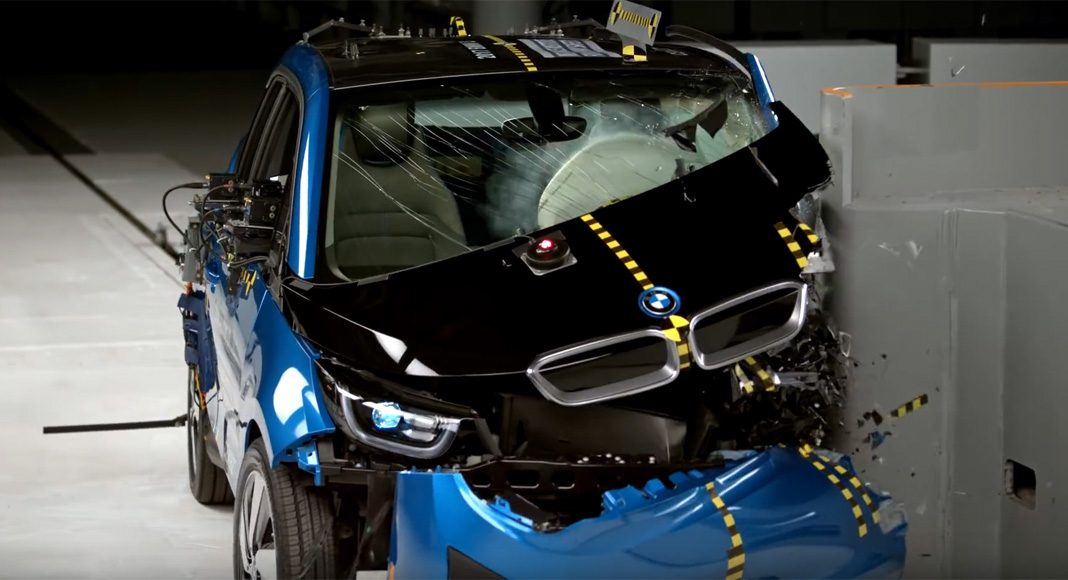Two all-electric vehicles have fallen short of meeting the Insurance Institute for Highway Safety’s awards criteria, but consumers who want to minimize gas consumption while also prioritizing safety can choose from two plug-in hybrids that earn the 2017 Top Safety Pick+ award.
The two recently evaluated 2017 all-electric models are the Tesla Model S and the BMW i3. The plug-in hybrid models are the Chevrolet Volt, whose award was announced in December, and the Toyota Prius Prime.
“There’s no reason the most efficient vehicles can’t also be among the safest,” said David Zuby, IIHS executive vice president and chief research officer. “We hope Tesla and BMW will continue to refine the designs of their electric models to maximize driver protection and, especially in the case of Tesla, improve their headlights.”
To qualify for Top Safety Pick, a vehicle must earn good ratings in all five crashworthiness evaluations — small overlap front, moderate overlap front, side, roof strength and head restraints — and have an available front crash prevention system that earns an advanced or superior rating. The “plus” is awarded to vehicles that meet all those criteria and also come with good or acceptable headlights.
The Tesla Model S, a large luxury sedan, earned good ratings in all IIHS crashworthiness evaluations except the challenging small overlap front crash test, in which it earned an acceptable rating. Despite lengthening the side curtain airbags to improve small overlap protection in the Model S, Tesla ran into problems in the test when the safety belt allowed the dummy’s torso to move too far forward. That allowed the dummy’s head to hit the steering wheel hard through the airbag.
Measurements from the dummy indicated that injuries to the head, along with the lower right leg, would be possible in a real-world crash of the same severity.
The ratings for the Model S apply to 2016 and 2017 cars built after October 2016. Tesla says it made a production change on January 23 to address the head-contact problem, and IIHS will test the updated vehicle for small overlap protection as soon as it can be delivered.
Although the i3, the Volt and the Prius all did better in the small overlap evaluation than the Model S, the results can’t be compared because the Model S is larger than the others. Since the kinetic energy involved in a front crash depends on the speed and weight of the vehicle, the Tesla’s acceptable rating is based on a more severe crash than the good ratings of the lighter cars.
The 2017 Model S isn’t available with anything other than poor-rated headlights. Tesla says it is working with its supplier to improve the headlights, and IIHS will evaluate the new ones when they are available.
The BMW i3, a small car, failed to reach the winner’s circle because it rated only acceptable in the head restraint and seat evaluation, which measures a vehicle’s ability to protect against neck injuries in a rear crash. While such injuries are rarely fatal, they are the most common type of crash injury and can cause debilitating pain.
The i3 earned good ratings in the other crashworthiness tests and is available with an optional front crash prevention system that earned an advanced rating. The system reduced the impact speed by an average of 9 mph in the 12 mph track test and by 7 mph in the 25 mph test. Its warning component meets National Highway Traffic Safety Administration criteria.
The i3’s only available headlight system earned an acceptable rating.
“BMW clearly thought a lot about safety when designing the i3,” Zuby said. “It’s a shame that it missed the mark on head restraints, which is something most of today’s vehicles get right. Among small cars, the i3 is the only 2017 model that doesn’t earn a good rating.”



















